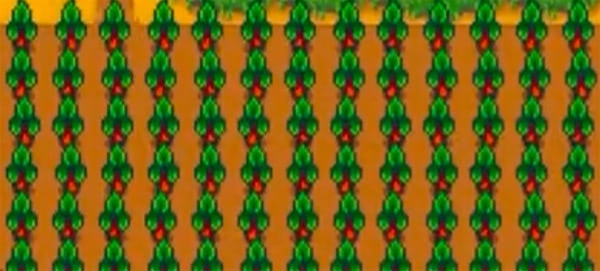In the delightful world of Stardew Valley, farming is more than just planting seeds and watching them grow. It’s an intricate balance of economics, timing, and resource management. Among the myriad of crops available to cultivate, Rhubarb often becomes the subject of controversy. Is it worth planting in your first year? How does it fare against other spring crops? Should you bother fixing the bus or community center just to get your hands on Rhubarb seeds? In this comprehensive guide, we will delve deep into the metrics that make Rhubarb a compelling yet complicated choice for Stardew Valley farmers.
Rhubarb: A Quick Overview
Rhubarb is a spring crop with the following characteristics:
- Maturation Time: 13 days
- Farming Experience: 26 XP
- Base Selling Price: 220g
- Daily Profit: 9.23g per day

Rhubarb Vs. Other Spring Crops
Daily Profit Comparison
When we look at Rhubarb’s daily profit, it stacks impressively against other spring crops:
- Kale: 6.67g per day
- Potato: 7.67g per day
- Cauliflower: 7.92g per day
- Strawberry (Egg Festival, harvested twice): 11.67g per day
If you’re looking to sell the crops directly, Rhubarb provides higher profits than most spring crops except for Strawberries planted during the Egg Festival.
First Year Challenges
However, in the first year, Rhubarb’s seeds are only available at the Oasis store in the desert. To get there, you must either:
- Restore the Vault at the Community Center, costing 42,500g.
- Repair the bus stop through Joja Mart, costing 40,000g.
These prerequisites make Rhubarb less appealing compared to Strawberries, which you can easily purchase during the Egg Festival.
Second Year and Beyond: Still Worth It?
Even in subsequent years, Rhubarb’s daily profit doesn’t beat the Strawberries’ rate, especially if you are growing “Spring Seeds Strawberries,” which yield 20.83g per day—more than double of what Rhubarb offers.
Optimizing with Deluxe Speed-Gro
If you utilize Deluxe Speed-Gro, you can harvest Rhubarb three times in a season, pushing its daily profit to 10g per day. However, even with this enhancement, each patch of land would only yield 280g, which is less than half of what Strawberries would make.
The Rhubarb Wine Route
The most viable option for Rhubarb is to use it for brewing wine. While brewing wine in the first year is tough and not practical, the second year offers more promise. Assuming you’ve maxed out your farming skill and chosen the Artisan profession, multiple kegs can dramatically increase your profits:
- Rhubarb Wine (two harvests): 1648g per tile
- Rhubarb Wine with Deluxe Speed-Gro (three harvests): 2392g per tile
Rhubarb vs. Strawberry Wine
If you opt for Strawberry wine, the earnings are a bit higher:
- Strawberry Wine (five harvests, no Deluxe Speed-Gro): 2420g per tile
- Strawberry Wine with Deluxe Speed-Gro (six harvests): 2844g per tile
However, one crucial factor is the brewing time. Rhubarb requires fewer keg operations than Strawberry, meaning you’ll spend less time managing your kegs if you opt for Rhubarb wine.
Final Thoughts: Is Rhubarb Worth It?
In the context of Stardew Valley, Rhubarb isn’t a one-size-fits-all crop. While it has its merits, it isn’t necessarily the best option for all farmers. Rhubarb’s daily profit and growth rate make it an attractive option, but the initial hurdles in acquiring the seeds and its inability to outperform Strawberries in raw profit make it a contentious choice.
Alternatives
If you are looking for alternatives, you might consider beekeeping for honey or focusing on Ginger Island, whose profitability can far exceed that of regular farm crops by the second year.
In summary, Rhubarb is a complex crop with a lot to offer, but its value ultimately depends on your farm’s specific situation and goals. So before you till those spring soils and start planting, consider all your options carefully.
